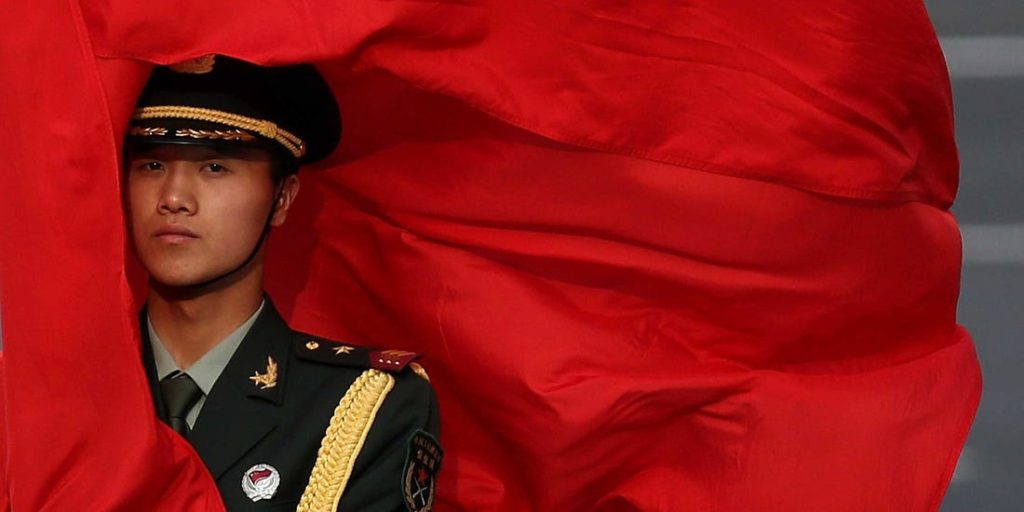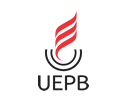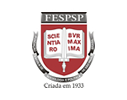Trump’s Desperation and the Manufactured China Threat

Crédito: Feng Li/Getty
By Atul Bhardwaj and Inderjeet Parmar*
As Donald Trump faces the possibility of a catastrophic electoral defeat in November 2020, he has constructed an enemy that can be constantly vilified, and whose alleged intentions and actions to end American primacy may generate fear psychosis among American voters and also among as many of his international allies he can persuade or coerce. Yet, his strategy may backfire as domestic uprisings against police racism and brutality against peaceful protestors, combined with a pandemic reaching deep into Trump’s own political heartlands, continue to demolish his credibility. And the levels of economic interdependence between the United States (US) and China, between American farmers and Chinese consumers, not to mention with Asian and other major economies, indicate that whatever security concerns animate strategy, China is too economically significant to be permanently alienated.
Other powers might fear China’s military and technological strength, but they look with hungry eyes at the economic opportunity it represents, especially in recovering from the pandemic-induced global crisis.
This is not, therefore, a new version of the US-Soviet Union Cold War. There is no existential threat from China to the US and the West, no division of the world into rival ideological camps, and no competing military blocs. This is a straightforward geopolitical competition underpinned by economic interdependence.
Trump needs a foreign enemy, and hence is rallying a broad US elite that distrusts his motives regarding China. Democrats do not believe that Trump represents US national interests; his only interest being in political survival and cronies’ financial interests. Yet, even cronies like Sheldon Adelson have significant interests in China’s casinos.
The US foreign policy establishment believes Trump has alienated allies like the European Union, weakened America’s hand in competing with China, and has brought US power into disrepute across the world. They have a more nuanced view of China, as a security concern and economic opportunity and potential future (junior) partner or “responsible stakeholder,” that is, as a subordinate to US hegemonic strategies. The scenario today is more Karl Kautsky than Vladimir Lenin, with inter-capitalist class shared interests with sharp competition, even tension and turbulence, rather than inevitable inter-imperial warfare.
Great Power Competition
The war on terror is definitely over, which has been the case since Barack Obama–Hillary Clinton’s pivot to Asia a decade ago. Great power rivalry is back on the agenda, embedded in the 2017 National Security Strategy. And the Communist Party of China (CCP) and President Xi Jinping are the villains of the piece.
While outrightly condemning the CCP and regime, the strategy claims to support the Chinese people. According to the White House, “The US has a deep and abiding respect for the Chinese people … We do not seek to contain China’s development, nor do we wish to disengage from the Chinese people”. Yet, the Trump administration has threatened to sanction all 90 million members of the CCP and their families—which could amount to almost a quarter of China’s population.
Trump is not, however, fundamentally different from the foreign policy elite. His levels of personal and political desperation, however, threaten the broader US elite programme of bringing China to heel. He has launched a desperate multipronged propaganda campaign against the CCP, blaming it for almost all evils:
economic espionage, data, and monetary theft and illegal political activities, using bribery and blackmail to influence US policy and last but not the least for being “engaged in a whole-of-state effort to become the world’s only superpower by any means necessary.”
The Trump administration’s strategy of demonising China is succeeding, its propaganda is being promoted by the GOP (the Republican Party) as an effort to advance a higher cause. And members of Congress are busy vying with each other to be the top China hawk. On the other hand, the Chinese media blitzkrieg, in defence of its own actions, is falling flat. Xi’s anger and humiliation are spilling over in violence on Himalayan borders, in the South China Sea, Taiwan, and Hong Kong.
The Pentagon has identified 20 Chinese commercial firms operating in the US, branding them proxies of the People’s Liberation Army. In an open letter to Trump, Brian Kennedy, president of Committee on the Present Danger: China (CPDC) alleges, “under Beijing’s intelligence statutes, all PRC companies and nationals are required to conduct espionage”. Hard evidence, as ever, appears unnecessary when it comes to the vilification of any competitor state that may appear to have future potential to challenge the world’s self-declared hegemonic power.
Besides elections, the second driver of Trump’s China policy is the American problem with the 5G technology that the Chinese company Huawei has unleashed globally.
The 5G Problem
Nobody understands penetration of sovereignty—through soft and hard power—better than the US. It has adroitly used its imperial skills to advance the “American century” since 1945. For the first time in decades, US hegemony is confronted by a potentially comprehensive counter-hegemonic force. But the China challenge is greater than the Soviet strategy of militarily irritation. Far more significantly, China is marching ahead in the technological sphere.
For more than three decades, American corporations and Wall Street elites have happily coexisted with and helped to build Chinese capitalism, including the Belt and Road Initiative (BRI). So what is so different now? Why is the US feeling so threatened by one Chinese company namely Huawei?
The basic problem is that Huawei has introduced 5G technology to the world, which revolutionises network speeds and ushers in the era of the Internet of Things (IoT), artificial intelligence and machine learning technologies. This is a great leap forward by the Chinese that has caused frenzy among Americans, who are deluded into believing that they will remain technologically superior to all others for posterity. The American fear is that the Chinese 5G will colonise or subordinate them.
To make matters worse, the consortium of US companies—Microsoft, Dell, and others—are still struggling to come up with an effective counter to Huawei’s 5G products. According to Foreign Policy magazine, Huawei is way ahead of other competitors in the field. Huawei 4G infrastructure is already being used by 170 countries and the “majority of countries in Europe, Asia, Africa, and Latin America have begun working with Huawei to develop their 5G networks”.
To the US foreign policy elite, and their representatives in the US Congress, it seems they are losing to the Chinese, and lagging so far behind that catching up may become impossible. The US failure to lead the technological revolution is being watched by the world.
It is not that Washington has surrendered. The “Sputnik moment” in the late 1950s triggered the Dwight Eisenhower administration to create the National Aeronautics and Space Administration (NASA), the Advanced Research Projects Agency (ARPA) to avoid future technological surprises. Likewise, there is bipartisan consensus among the lawmakers in Washington that tens of billions of dollars should be invested in “America’s semiconductor industry over the next 5 to 10 years to help the US retain an edge over Beijing”.
The net result is that 5G is a game-changing technological issue with geopolitical ramifications. Washington is worried that it is losing its grip over the world. In May 2019, Trump signed an executive order to ban Huawei from accessing US information and communications technology and services supply chain.
The Ultra Hawkish Think Tank
At the core of the anti-Huawei campaign is the recently-resurrected and retooled CPDC, which has 60 members from varied backgrounds, government, non-government and international actors. According to an ongoing study of the CPDC by the authors of this article, more than 40% of the committee members are former military and intelligence officers.
The three most prominent members of the CPDC team are its president Brian T Kennedy, vice president Frank Gaffney, and Steven Bannon, the former White House strategist. Kennedy is former president of the Claremont Institute, a California-based conservative think tank. The essay titled “The Flight 93 Election,” published in the Claremont Review of Books played a crucial role in making Trump acceptable to conservatives. Kennedy is also the president of the American Strategy Group that works on “the existential threats to the US and western civilisation presented by the Islamic world, Russia, China, and the loss of America’s founding principles.”
The vice president of CPDC, Frank Gaffney, is the executive chairman of Center for Security Policy (CSP), an anti-Islamic think tank that advocates hawkish attitude towards Syria and Iran. Bannon, a former navy officer and hedge fund manager, is one of the most active members on the international stage, playing an important role in forging an international right-wing movement and in convincing right-wing parties across the world about the supposed dangers posed by the CCP. In a recent statement, Bannon declared that the Trump administration has a war plan against China, including aiding India on the borders of “Chinese-occupied Tibet”.
The CPDC is influential with direct reach to the White House. It has all the elements to show that it is a part of the deep state that runs the US and its foreign policy.
Other prominent CPDC members are James Fanell, former US navy captain and director of Intelligence and Information Operations, US Pacific Fleet, and R James Woolsey, former Central Intelligence Agency director and venture capitalist. Rod Martin is recognised as one of the leading experts on the linkages between technology and politics. Martin was senior advisor to Peter Thiel, the founder of PayPal. Thiel is an important pillar of conservatism in the Silicon Valley, and major Trump backer.
The committee has five Chinese dissidents, including Xiaoxu ‘’Sean’’ Lin, who works for the US Army as a microbiologist, specialising in viral diseases. He claims to be a survivor from the 1989 Tiananmen Square massacre in Beijing and a victim of persecution by Chinese authorities for following Falun Gong, a religious cult. An active networker and broadcaster, he founded WQER-LP community public radio and the Sound of Hope Radio Network, a Chinese radio network in America.
CPDC, the hotbed of American conservatives, believes that Henry Kissinger was one of the main architects of American decline, and there is a fundamental need to steer the foreign policy away from old shibboleths.
Kissinger Contra Americanism
Trump is now the self-styled “Wartime President” who is fighting an “invisible enemy,” which he and his administration have identified as the “China virus” or “Kung Flu.” Trump’s style of diplomacy based on name-calling and insulting the adversary, according to Kishore Mahbubani, lacks what George Kennan had identified as “spiritual vitality.” This lack comes from the fact that paleo-conservatives who deride classical conservatism believe that blatant Islamophobia and Sinophobia provide the much-needed moral clarity to understand that American civilisation is worth defending. This ideological stance considers Trump’s aversion to political correctness as an indispensable qualification for a commander-in-chief.
Inspired by CPDC and other conservative think tanks in May this year, the White House released a report titled, “United States Strategic Approach to the People’s Republic of China,” enunciating its China strategy. The report highlights the obduracy of the CCP to resist any form of convergence with the free and open order, a euphemism for the US empire. The report laments that the CCP’s desire to shape the international order has “compelled the US to adopt a competitive strategy, guided by a return to principled realism”. The phrase is considered to be the bedrock of Trump’s foreign policy doctrine since its use in National Security Strategy, 2017.
In an article by Stephen B Young, available on the website of CPDC, “principled realism” is explained as “principle as an inspiration for action and realism as a constraint.” The article is critical of Kissingerian realism, which it considers unprincipled and “idolatry” because it is rooted in the appeasement of the powerful and devoid of values and idealism. Kissinger’s realism “justifies cronyism—the sucking-up to those with power, celebrity, and money”.
Kissinger’s crimes include détente with the Soviet Union and cultivation of Deng Xiaoping after Mao Zedong. Trump’s China policy is not interested in offering Beijing détente nor any cultural and economic carrot because it does not consider them capable of constraining Chinese expansion and undermining its authoritarianism. Trump’s foreign policy self-servingly claims that the CCP is inherently aggressive. Hence, China must be placed under perpetual pressure. American power is reasserting itself and is pitching for a regime change in China.
Trump’s foreign policy wants sovereignty as the lynchpin of the world order. The fact, however, is that strong nation states in the age of 5G and digital currencies is a contradiction in terms. Yet, anxieties over global supremacy in security terms, and the enticing reality and prospect of economic interdependence remain the source of global tensions and schizophrenia, exacerbated by Trump’s political desperation to remain in the White House until 2024.
* Dr. Atul Bhardwaj is an honorary research fellow in the department of international politics at City, University of London. He is the author of India-America Relations (1942-62): Rooted in the Liberal International Order (Routledge, 2018). Inderjeet Parmar is professor of International Politics at City, University of London, a visiting professor at LSE IDEAS (the LSE’s foreign policy think tank), and visiting fellow at the Rothermere American Institute at the University of Oxford. Professor Parmar is also a member of the advisory board of INCT-INEU (Brazil’s National Institute of Science and Technology for Studies on the United States).
** Originally published at Economic & Political Weekly, Vol. 55, Issue No. 31, 01 Aug, 2020. This article does not necessarily reflect the opinion of OPEU or INCT-INEU.





















